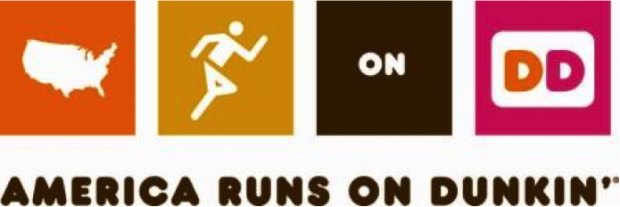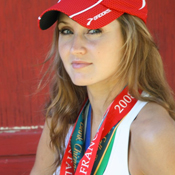Uncle Fred, Dunkin' Donuts, and Expectations

Early in 2009, Sally told her dad, Fred, that she was going to run the Chicago Marathon. Fred was a runner, too—albeit a more leisurely one than Sally. Though he was in his early sixties, he could still rock a ten-minute mile, and once a week, the father-daughter duo would convene for a two-mile jog.
“I ran for about thirty years,” Fred noted. “At one time, I could run eight-minute miles for up to four miles. But as I got a little older, I could run only two miles three days a week. And Sally, my daughter, who is thirty years younger—” he pauses to correct himself—“well, not exactly thirty years. Twenty-seven years younger. She became a marathon runner. When she told me she was going to enter the Chicago Marathon, I thought I could run part of it with her.”
Sally and Fred devised a plan for a mid-race confluence. Fred would stand sentry at mile twenty until he spotted Sally, at which juncture he would dart onto the course, infiltrate the glut of participants, and run exactly one mile with his daughter.
At eight-thirty pace.
“I was running regularly at that time,” Fred continued, “but I was running ten-minute miles. Since I was running with her one day a week, I figured I could do it. But I needed to train to run eight-and-a-half-minute miles.”
Eight-thirty pace. For one mile. That was his goal.
Fred trained seriously for six months. Sally devised a training program for her dad. It included pace runs on a treadmill “at seven-point-two, which is, evidently, equivalent to an eight-and-a-half-minute mile.” He would be ready for his mile in the Chicago Marathon.
His hard work paid off. Kinda. By the time October rolled around, Fred could run an eight-thirty pace.
For approximately three minutes.
“I found my way out to the twentieth mile mark,” he recalled of race day. “I was so excited and so anxious to run, even though my training hadn’t gotten me to eight-and-a-half-minute miles. But it did get me under nine.”
Fred knew he would need an extra boost of energy if he wanted any hope of hanging with Sally, so he “went to the 7-Eleven across the street and ate a pack of sugar.” At last, he saw his daughter. It was time to reap the harvest of six months of training and dedication. He jumped in alongside her, just as the two had planned.
He then “ran out of steam immediately.”
After only a few glorious steps with his daughter, Fred stopped, grabbed his side, and bent over in exhaustion. Six months of training imploded within a quarter of a mile. (“A friend of mine is a track coach,” he explained. “He said I went into oxygen debt. I was going so much faster than my body was capable of going.”) Sure, he knew eight-thirties would be pushing it. But Sally wasn’t running eight-thirties.
She was running seven-thirties.
“She was ahead of me, and I yelled for her to keep going. And then I got out of the run.”
Fred navigated his way through the mass of spectators to a street some distance from the course to escape the chaos. (“I walked and walked and nothing looked familiar.”) He had two dollars in his pocket and no idea where he was. Somewhere in Chicago. And not a particularly nice somewhere, for that matter. To his relief, Fred happened upon a Dunkin’ Donuts.
“I did what any great runner would do. I ate two donuts. That’s when I realized I didn’t have any way to get back to the finish line.”
As the saying goes, America runs on Dunkin’.
Revitalized by a thousand calories of fried confection, Fred decided to run his mile, right there along the streets of Heaven Knows Where, Chicago. (“By myself, at my own pace.”) And run he did. And then he was done.
He was still five miles from where he needed to be.
“Finally, I was able to hail a cab. And I told him to take me to the finish line. I didn’t have the nerve to tell him I didn’t have any money. After we got back, I said, ‘Look, you’re not going to believe this, but I don’t have any money. But my daughter and wife are at the finish line, and they have money. If you wait here, I promise I’ll get the money and come back to pay you.’ He said, ‘I’ll wait for you.’ I was very surprised. I guess I looked respectable. And tired. And worried.”
Incredibly, Fred was able to find Sally among the tens of thousands of runners. He collected the money and ran back to the cab driver—who had, even more incredibly, waited for him.
No, Fred’s mile in the Chicago Marathon hadn’t gone exactly as planned. Instead, it was mythologized.
As often as I remind myself that race day is reliable only in its unpredictability, I persist in imbuing it with an assortment of expectations. For all of the tedium of training—for all of its sameness—racing is constitutionally unpredictable. Perhaps it is this counter-intuitiveness of the racing-training equation that incites untoward assumptions. We plan, therefore we expect. But races are volatile. We can only prepare, not guarantee.
Still, there is a “Charles’s Law” effect to running: as the intensity of training increases, our expectations also increase. Our hopes on race day are contingent on the amount of work we put into training. That’s why we feel so befuddled and blasphemous when training is abbreviated or otherwise less than stellar. It’s not just deflating to expect a poor performance; to the seasoned runner, it feels downright impious.
But unpredictability is a two-way street. Just as perfect training (if there is such a thing) cannot secure a perfect race, blighted training isn’t necessarily collateral for disaster. Sure, you may not PR. Sure, you need to take into account your current fitness level. But there is territory not subject to the jurisdiction of a PR or of throwing in the towel.
Next week, I will be traveling to New York to run the Brooklyn Marathon. Exactly two weeks after the more heralded New York Marathon, the Brooklyn Marathon is capped at 500 runners and takes place entirely in Prospect Park—two small loops followed by six big loops followed by a final small loop. Training has been dicey, at best.
In other words, I have no idea what to expect.
On the upside, there is a Dunkin’ Donuts at the southwest corner of Prospect Park. And I’ll have nine opportunities to jump ship.
Ahoy.

Amy L. Marxkors is the author of The Lola Papers: Marathons, Misadventures, and How I Became a Serious Runner and Powered By Hope: The Teri Griege Story. Click here to receive Amy's weekly article via email.
Connect With Us
see the latest from Fleet Feet St. Louis